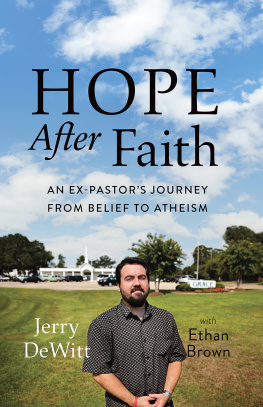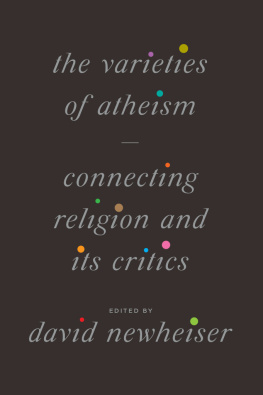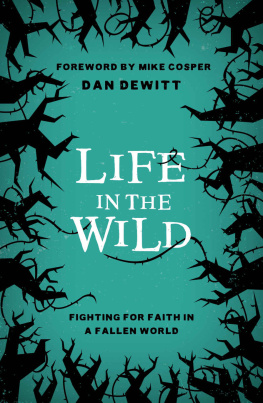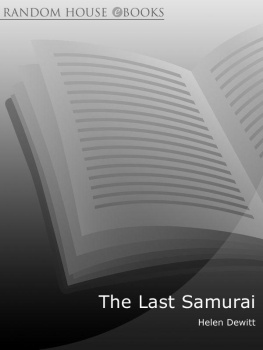

Table of Contents
To my beloved late grandfather, my Paw-Paw,
Paul Gordon Williamson
Skepticism is my Nature,
Freethought is my Methodology,
Agnosticism is my Conclusion,
Atheism is my Opinion
and Humanism is my Motivation.
Prologue
He that descended is the same also that ascended up far above all heavens, that he might fill all things. And he gave some, apostles; and some, prophets; and some, evangelists; and some, pastors and teachers; For the perfecting of the saints, for the work of the ministry, for the edifying of the body of Christ.
Ephesians 4:1012
J UST AFTER MY FIFTEENTH BIRTHDAY , I bought my first car, a two-door 1982 Pontiac Grand Prix. It was the spring of 1984, and my paternal grandfather, John Owen DeWitt, had just passed and I used the portion of his estate that he had left me, five thousand dollars, to purchase the Grand Prix. It didnt matter that Id purchased the Grand Prix at a used-car dealership near my home in Rosepine, Louisiana, because that early 1980s moment represented perhaps the peak of cool for the Pontiac brand. In 1977, the Pontiac Trans Am starred along with Burt Reynolds in the action film Smokey and the Bandit . My Grand Prix seemed just as cool to me as Reynoldss ride. From its long, narrow dashboard to its imposingly large, three-spoke steering wheel, it was saturated in blue: a monochromatic color scheme interrupted only by the wood-grain accents throughout the interior. For my inaugural drive in the Grand Prix, I decided to make the fifty-mile trip from Rosepine to Sulphur, Louisiana, where I hoped to reunite with my beloved fourth-grade teacher, Ms. Blair, at Maplewood Elementary. As I pulled into the Maplewood Subdivision I drove by my old house, one of the only places Id ever lived as a child where Id had so many neighbors, all of whom lived in a proximity unimaginable in pastoral Rosepine. I remembered the trouble-making neighbors across the streettwo middle-school boys armed with pellet gunswho shot out the back-window glass of a station wagon owned by my next-door neighbor on a freezing winters morning. I recalled one glorious night of trick or treating, where all I had to do was just walk out of the house for seemingly endless opportunities for candy, a stark contrast from the country life in which I had no choice but to pile into my moms car to stop at even a single house.
When I arrived at Maplewood Elementary, I walked up to the door of Ms. Blairs classroom and peered through a narrow window at the top of the door. Ms. Blair saw me at the door and, to my surprise, instantly recognized me. Seeing Ms. Blair again rekindled the appreciation I had for the tremendous energy and love that she had invested in me, a painfully shy, mildly dyslexic fourth grader. Even as I struggled with basic reading and vocabulary, Ms. Blair saw potential in me. In fact, Ms. Blair not only recognized what I could be; she saw what my strengths already were. She told me that I possessed a powerful sense of intuition and encouraged me to use that gift at every opportunity. Go with your gut, Jerry, shed say. Go with your gut. That day, just outside Ms. Blairs classroom, however, we simply engaged in the business of catching up: we asked about the health of each others families and vowed to stay in touch.
Over the next year, Ms. Blair and I continued to stay connected from afar through birthday and holiday cards; sometimes Id even take the Grand Prix for a spin to Sulphur just to see her. Then, just before Easter Sunday in 1986, Ms. Blair offered me an exciting and completely unexpected invitation: she asked if Id accompany her and her husband, Roger, and the youth group from their church, the Southside Assembly of God, to attend Jimmy Swaggarts camp meeting in Baton Rouge. A camp meeting is a large-scale religious service in which worshippers travel to a specific site to hear preachers deliver the word of God. The packed roster of preachers at a camp meeting promises a nearly nonstop succession of services and speakers and, as it slowly proceeds over several days, emotions of the attendees and their praise of God reaches a fevered pitch. The camp meeting is particularly important among Pentecostals in the rural South and Southwest, as the phenomenon has its roots in the frontier Christianity of the 1800s.
Id never been to a camp meeting before Ms. Blairs invitation and Id most certainly never seen Swaggart live. While Swaggart is now inextricably linked to a 1988 prostitution scandal that hastened his downfall, back then Swaggart was still a rock star among Pentecostals, particularly in his home state of Louisiana. I loved that Swaggart and his cousin Jerry Lee Lewis both came from the same black-dirt, backwoods Louisiana village, Ferriday, about 130 miles northeast of my hometown, DeRidder, in the southwest section of our state. As a young Pentecostal, I was struck by the fact that while Swaggart and Lewis represented seemingly opposite sides of a spiritual dichotomythe sacred and the profaneboth men were propelled in their careers by the power of music. Growing up in DeRidder, the TV in our living room was always tuned in to Swaggarts Sunday-morning telecast. I loved hearing Swaggarts honky-tonk piano playing blasting from the TV and savored his brilliance in having a full orchestra back him, which gave his down-home music a proud, majestic pomp. But it was the style with which Swaggart preached that affected me most. I would watch, awestruck, as Swaggart prowled the stage, holding a leather-bound Bible open in one hand, with half of the great book hanging loose, its red bookmark swaying in the air. Swaggart shook his Bible with such authority and passion that when he looked directly at the camera and pointed his finger in the viewers direction it felt like he was preaching right there in our living room. As a withdrawn, anxiety-ridden adolescent, the confidence and certainty of Swaggart made me think, Thats the person I want to be. And as a teenager slowly finding my faith in the world of Pentecostalism, I admired Swaggart for both his roots as a traveling evangelist and for refusing to turn his back on his most hardscrabble of beginningseven after building his megachurch in Baton Rouge and launching a groundbreaking televangelist career, which at its early 1980s peak boasted more than 250 TV stations featuring Swaggarts telecast. Swaggart had built an empire from dirtcould I do the same?
When Ms. Blair, her husband, Roger, and I arrived at the camp meeting at Swaggarts Family Worship Center on Bluebonnet Avenue in Baton Rouge in April of 1986, every expectation I had for the event was instantly fulfilled. The Family Worship Center had a long, sloped glass exterior that was more five-star Four Seasons Hotel than Pentecostal church. Inside, near the sanctuary, there was a mosaic of the worlds continents painted on the walls that made me feel as though I had walked into the United Nations building. Closer to the sanctuary, the words of Mark 16:15And he said unto them, Go ye into all the world, and preach the gospel to every creaturewere inscribed on the walls. The global imagery and the words from the Gospel of Mark sent an unmistakable message: we were all at the very center of Christs global mission.
It was a mission that I couldnt help but feel drawn to. The idea of changing the world for the better coincided with my youthful desires to create a utopia. I was both nave and ambitious enough to believe that I could make the world a better place and perhaps even bring about world peace. It was not necessarily an idealistic craving: I was raised in an extraordinarily chaotic environment, so peace had always been an objective of mine. The chaos I experienced at home and the yearning I felt for a more harmonious familial life imbued in me a love for humanity and a desire to lessen its suffering. My feelings of empathy, in turn, made me captivated by the idea that the Prince of Peace, Jesus Christ, could bring about peace through his present-day kings and priests: the faithful Christians who filled Swaggarts church. That day, I felt like a Catholic walking into the Vatican for the first time. I truly believed I was at the center of the world.
Next page











